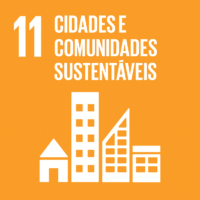Ciência_Iscte
Publicações
Descrição Detalhada da Publicação
Título Livro
Smart life and smart life engineering: Current state and future vision
Ano (publicação definitiva)
2025
Língua
Inglês
País
Suíça
Mais Informação
Web of Science®
Esta publicação não está indexada na Web of Science®
Scopus
Google Scholar
Esta publicação não está indexada no Overton
Abstract/Resumo
Overtourism occurs when the number of tourists exceeds the carrying capacity of a destination, leading to negative impacts on the environment, culture, and quality of life for residents. By monitoring overtourism, destination managers can identify areas of concern and implement measures to mitigate the negative impacts of tourism while promoting smarter tourism practices. This can help ensure that tourism benefits both visitors and residents while preserving the natural and cultural resources that make these destinations so appealing.
This chapter describes a low-cost approach to monitoring overtourism based on mobile devices’ wireless activity. A flexible architecture was designed for a smart tourism toolkit to be used by small and medium-sized enterprises (SMEs) in crowding management solutions, to build better tourism services, improve efficiency and sustainability, and reduce the overwhelming feeling of pressure in critical hotspots.
The crowding sensors count the number of surrounding mobile devices, by detecting trace elements of wireless technologies, overcoming MAC address randomization. They run detection programs for several technologies, and fingerprinting analysis results are only stored locally in an anonymized database, without infringing privacy rights. After that edge computing, sensors communicate the crowding information to a cloud server, by using a variety of uplink techniques to mitigate local connectivity limitations, something that has been often disregarded in alternative approaches.
Field validation of sensors has been performed on Iscte’s campus before their planned use in other locations, such as the Pena Palace in Sintra. Preliminary results show that these sensors can be deployed in multiple scenarios and provide a diversity of spatiotemporal crowding data and analysis in order to promote smart engineering techniques to be used for tourism overcrowding management.
Agradecimentos/Acknowledgements
This work was developed in the scope of the RESETTING project, funded by the COSME Programme (EISMEA) of the European Union under grant agreement No.101038190.
Palavras-chave
Crowding sensor,Edge,computing,Fingerprinting,MAC address randomization,Overtourism,Smart tourism toolkit,Wi-Fi detection
Classificação Fields of Science and Technology
- Ciências da Computação e da Informação - Ciências Naturais
- Engenharia Eletrotécnica, Eletrónica e Informática - Engenharia e Tecnologia
Registos de financiamentos
| Referência de financiamento | Entidade Financiadora |
|---|---|
| COS-TOURINN 101038190 | COSME Programme (European Union) |
| UIDB/EEA/50008/2020 | Fundação para a Ciência e a Tecnologia |
Contribuições para os Objetivos do Desenvolvimento Sustentável das Nações Unidas
Com o objetivo de aumentar a investigação direcionada para o cumprimento dos Objetivos do Desenvolvimento Sustentável para 2030 das Nações Unidas, é disponibilizada no Ciência_Iscte a possibilidade de associação, quando aplicável, dos artigos científicos aos Objetivos do Desenvolvimento Sustentável. Estes são os Objetivos do Desenvolvimento Sustentável identificados pelo(s) autor(es) para esta publicação. Para uma informação detalhada dos Objetivos do Desenvolvimento Sustentável, clique aqui.

 English
English



